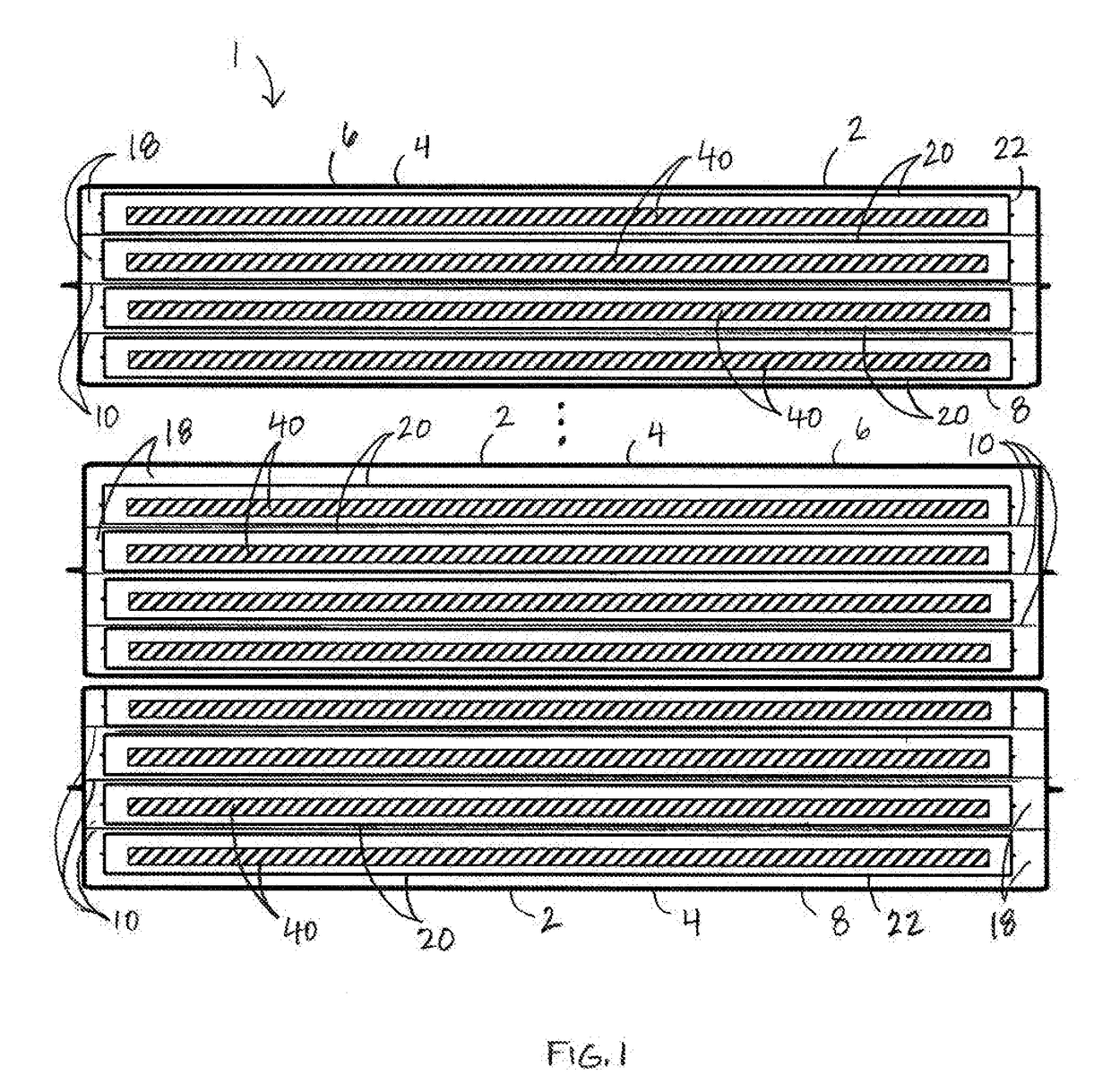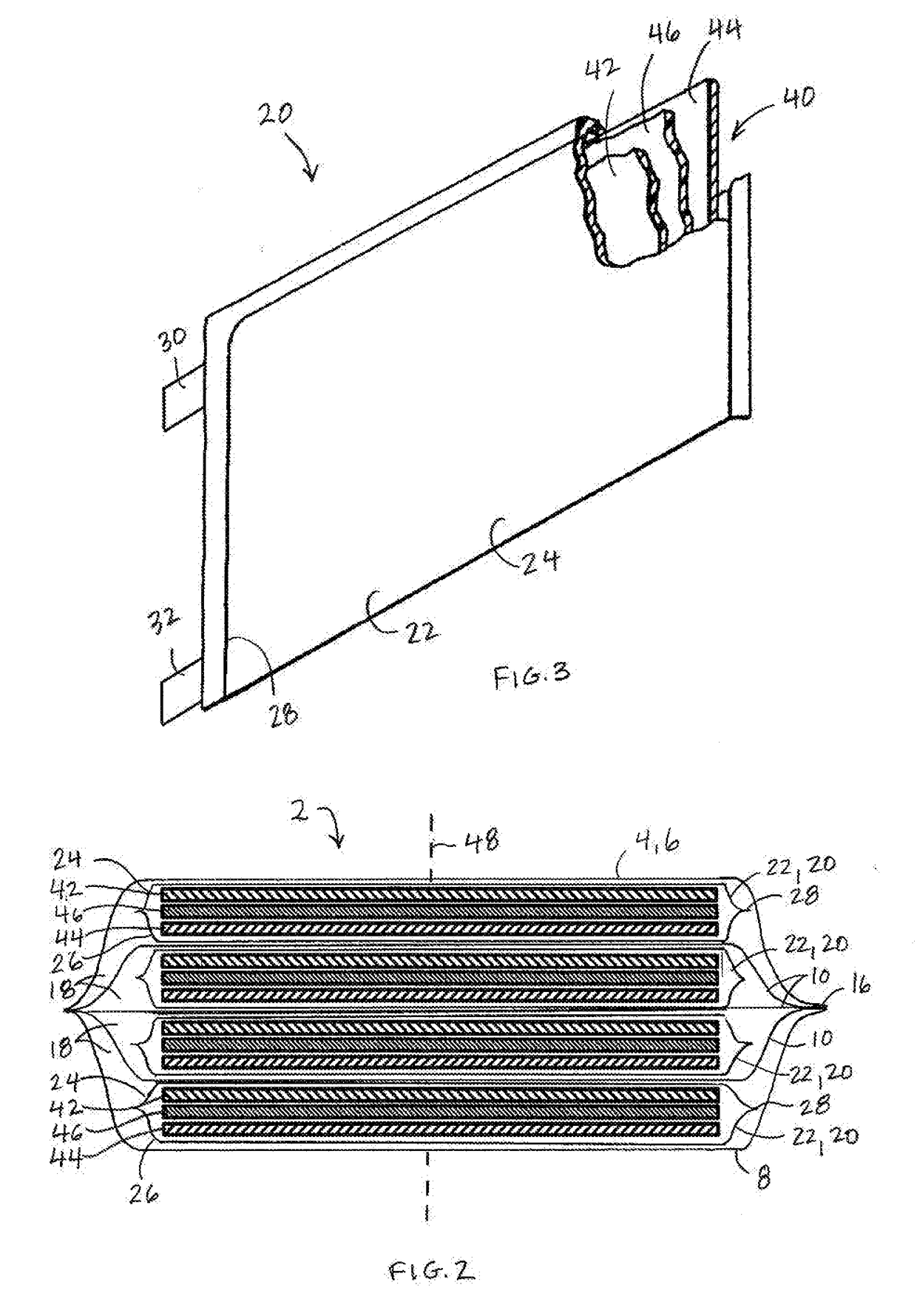Multicavity Battery Module
a battery module and multi-cavity technology, applied in the field of battery modules, can solve the problems of increased cost, complexity and cost of battery packs, increased cost, etc., and achieve the effects of reducing battery pack complexity, volume and cost, and improving cell cooling
- Summary
- Abstract
- Description
- Claims
- Application Information
AI Technical Summary
Benefits of technology
Problems solved by technology
Method used
Image
Examples
Embodiment Construction
[0022]Referring to FIGS. 1-2, a battery pack 1 used to provide electrical power includes electrochemical cells 20. The cells 20 are very thin, large-area lithium-ion pouch cells that include a single-layer electrode assembly 40 that is sealed within a cell housing 22 along with an electrolyte to form an energy storage unit. Cells 20 are electrically interconnected and stored in an organized manner within a module housing 4 to form a battery module 2. The module housing 4 is segregated into a plurality of cavities 18. Each cavity 18 is configured to receive a single cell 20. Within the battery module 2, the cells 20 are electrically connected in series or in parallel, and within the battery pack 1, the battery modules 2 are electrically connected in series or in parallel. The resulting battery pack 1 is relatively thin, has a large area, and can be provided in any desired profile including complex, curved geometries, allowing for space efficient integration into a vehicle body, as di...
PUM
| Property | Measurement | Unit |
|---|---|---|
| width | aaaaa | aaaaa |
| thickness | aaaaa | aaaaa |
| thickness | aaaaa | aaaaa |
Abstract
Description
Claims
Application Information
 Login to View More
Login to View More - R&D
- Intellectual Property
- Life Sciences
- Materials
- Tech Scout
- Unparalleled Data Quality
- Higher Quality Content
- 60% Fewer Hallucinations
Browse by: Latest US Patents, China's latest patents, Technical Efficacy Thesaurus, Application Domain, Technology Topic, Popular Technical Reports.
© 2025 PatSnap. All rights reserved.Legal|Privacy policy|Modern Slavery Act Transparency Statement|Sitemap|About US| Contact US: help@patsnap.com



